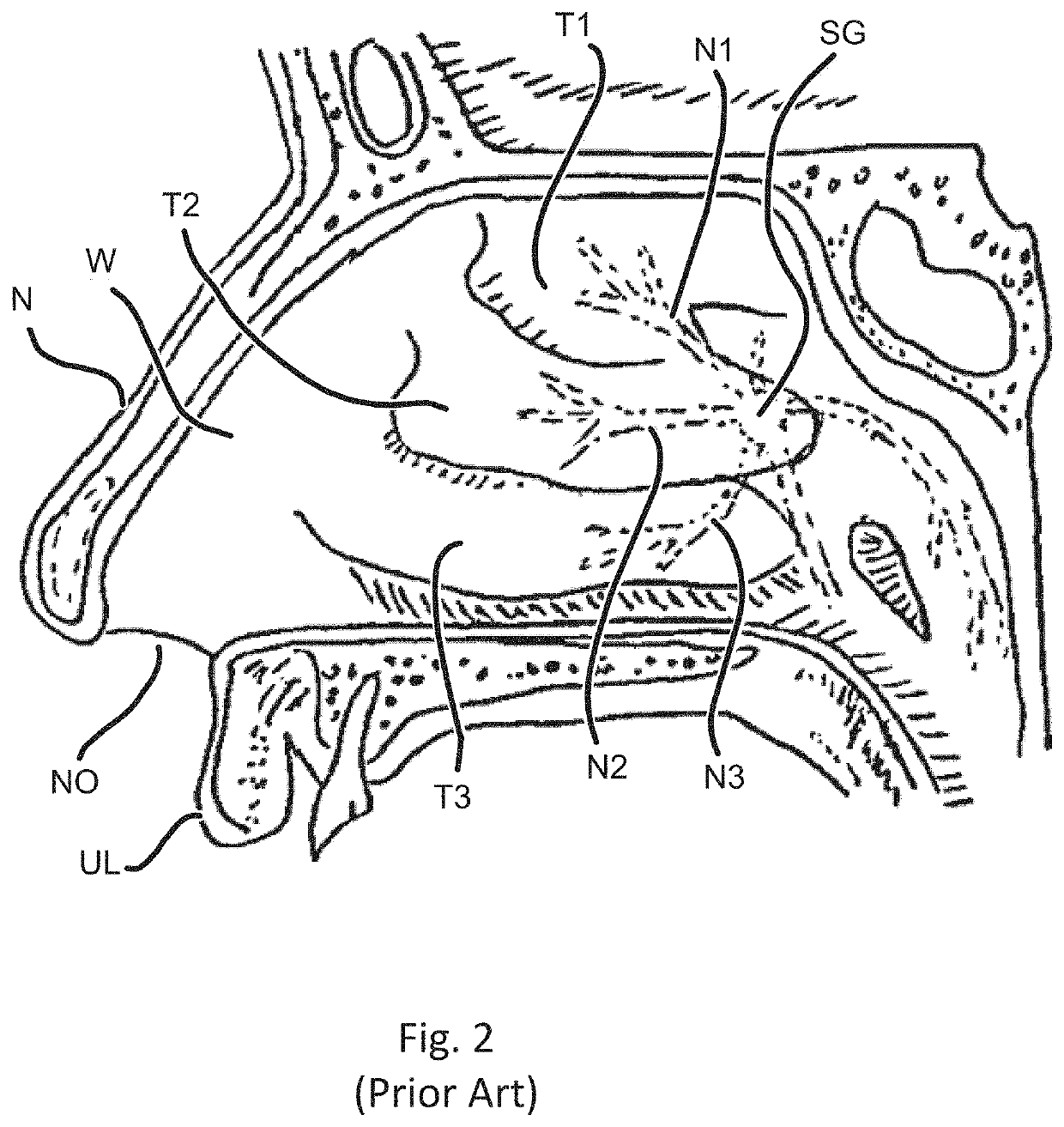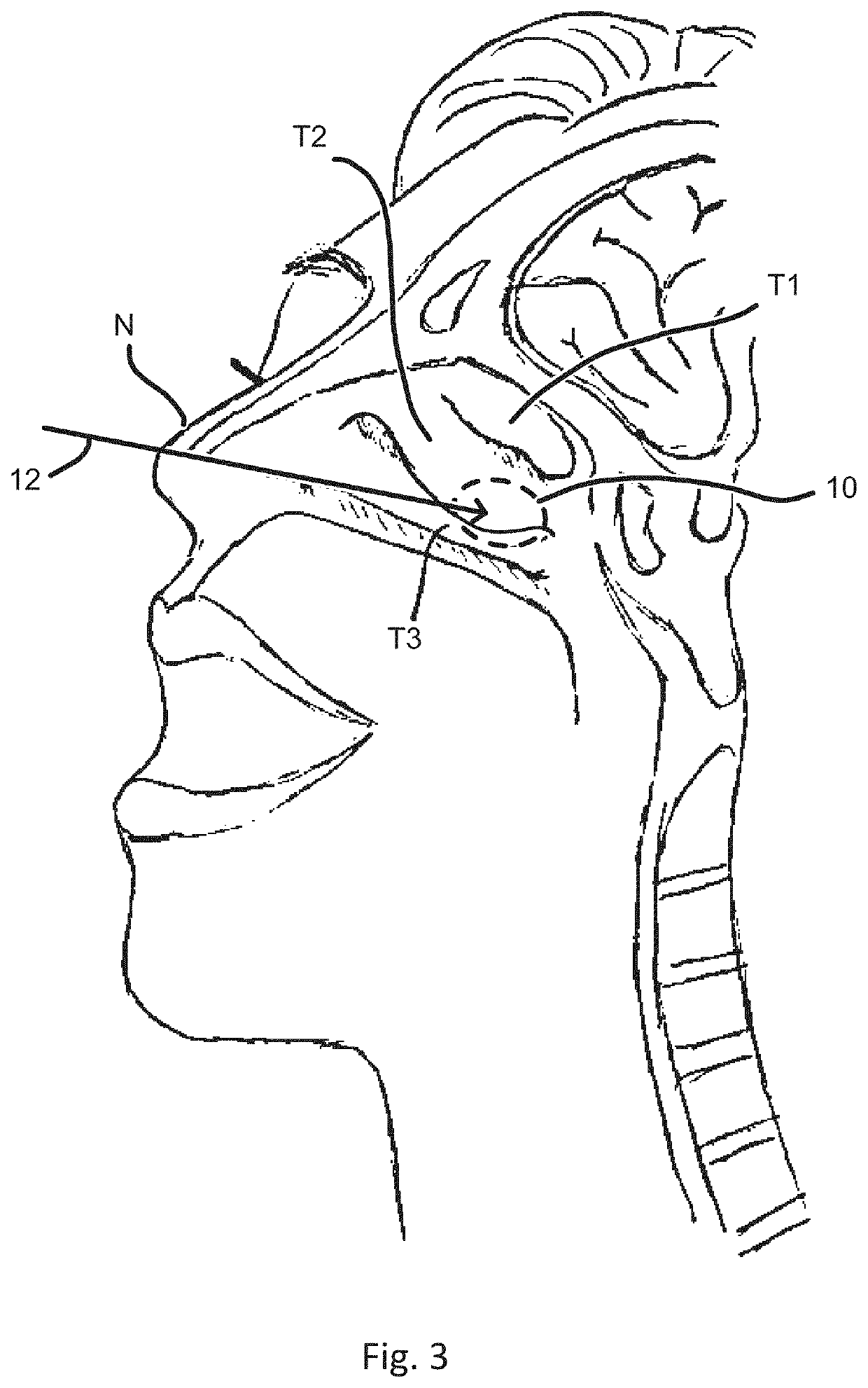Devices and methods for treating a lateral surface of a nasal cavity
a technology for lateral surfaces and nasal cavities, applied in medical science, surgical instruments for cooling, surgery, etc., can solve the problems of many people being distressed by their regular, difficult or impossible to avoid triggers, and debilitating states, so as to improve patient outcomes and patient safety, and increase lateral contact or apposition
- Summary
- Abstract
- Description
- Claims
- Application Information
AI Technical Summary
Benefits of technology
Problems solved by technology
Method used
Image
Examples
Embodiment Construction
[0061]The present invention generally relates to medical devices, systems and methods, and more particularly relates to devices, systems and methods that treat rhinitis. Such treatment of rhinitis is achieved by decreasing or interrupting nerve signals that are transmitted from the sphenopalatine ganglion to the nasal mucosa via the posterior nasal nerves. Decrease or interruption of nerve signals can be attained by a variety of methods, particularly by the application of physical therapies (compression or cutting), thermal therapies (heat or cold), or chemical therapies (alcohol or anesthetic injections). Examples of thermal therapies include cryotherapy, cryoneuromodulation, cryomodulation, cryolysis, cryoablation, and thermoablation. It has been found that a specific target area within the nasal cavity is particularly effective in treating rhinitis. This target area is located along the lateral wall W in the middle meatus within a cul-de-sac CDS. The cul-de-sac CDS in the middle ...
PUM
 Login to View More
Login to View More Abstract
Description
Claims
Application Information
 Login to View More
Login to View More - R&D
- Intellectual Property
- Life Sciences
- Materials
- Tech Scout
- Unparalleled Data Quality
- Higher Quality Content
- 60% Fewer Hallucinations
Browse by: Latest US Patents, China's latest patents, Technical Efficacy Thesaurus, Application Domain, Technology Topic, Popular Technical Reports.
© 2025 PatSnap. All rights reserved.Legal|Privacy policy|Modern Slavery Act Transparency Statement|Sitemap|About US| Contact US: help@patsnap.com



